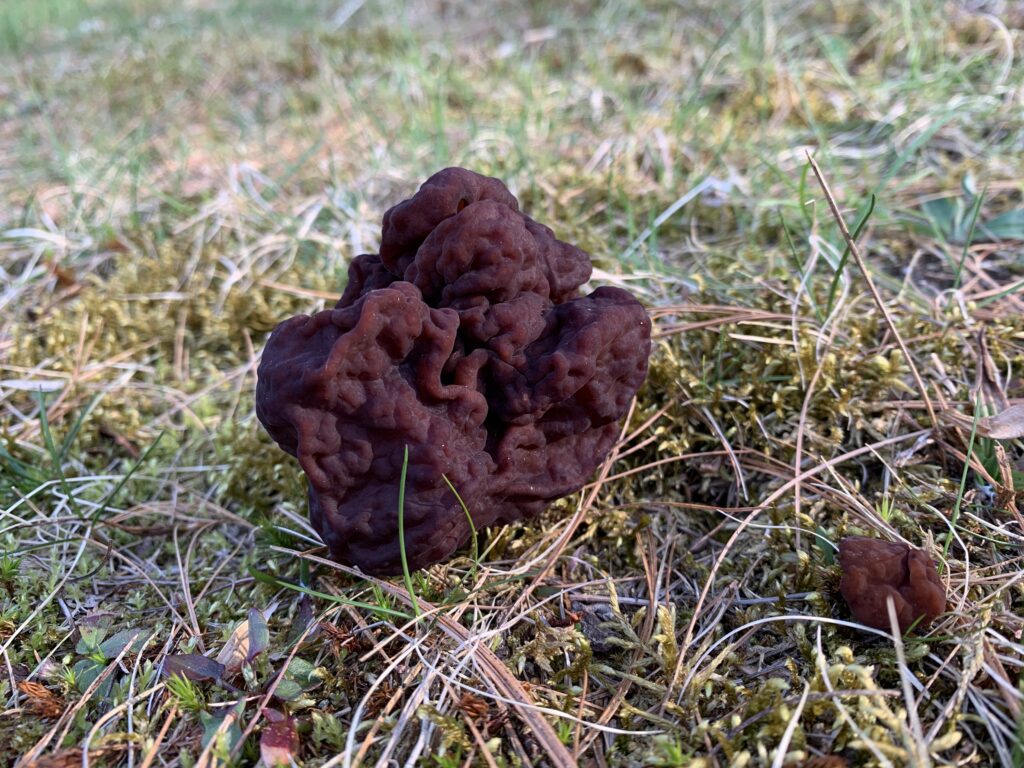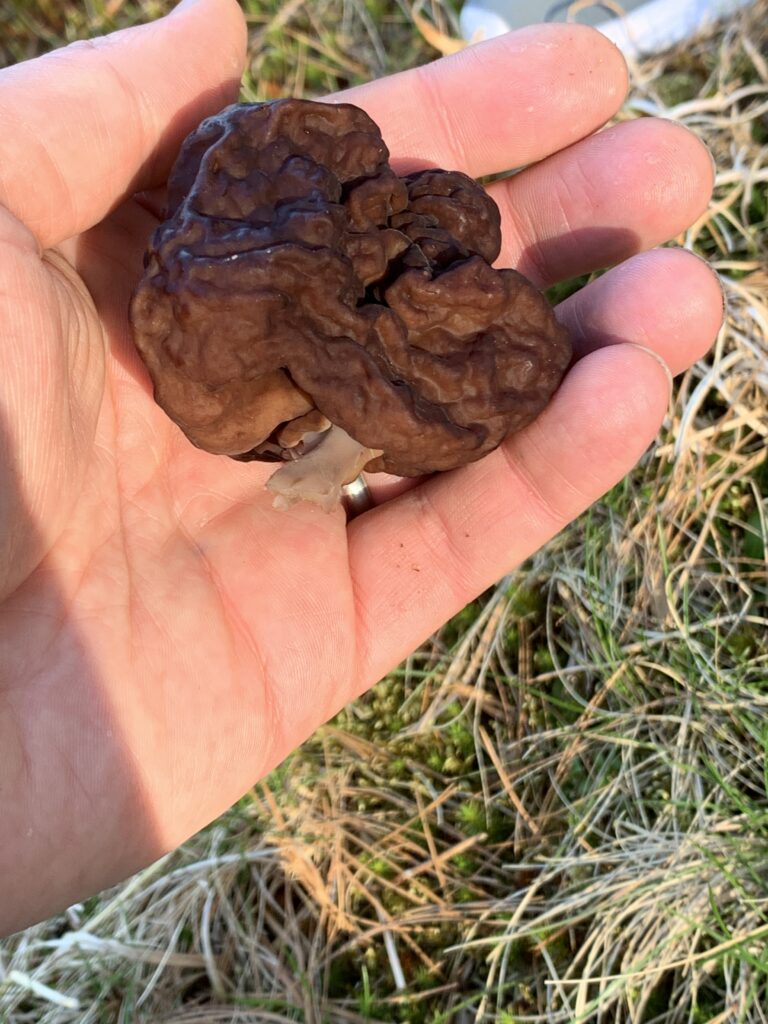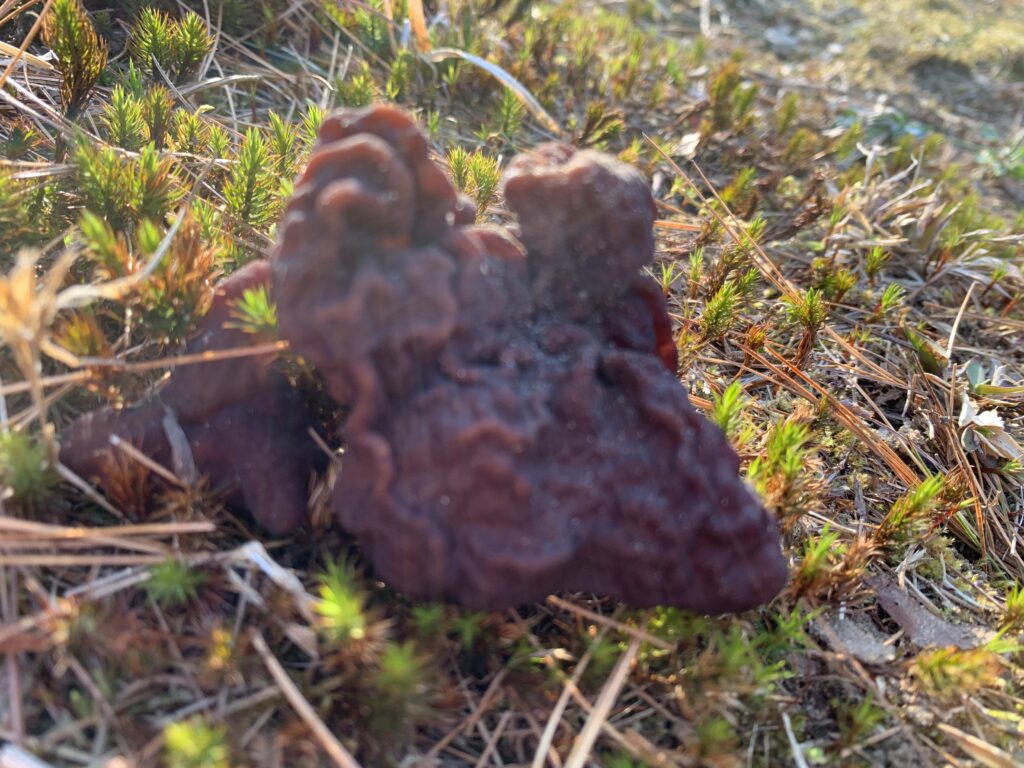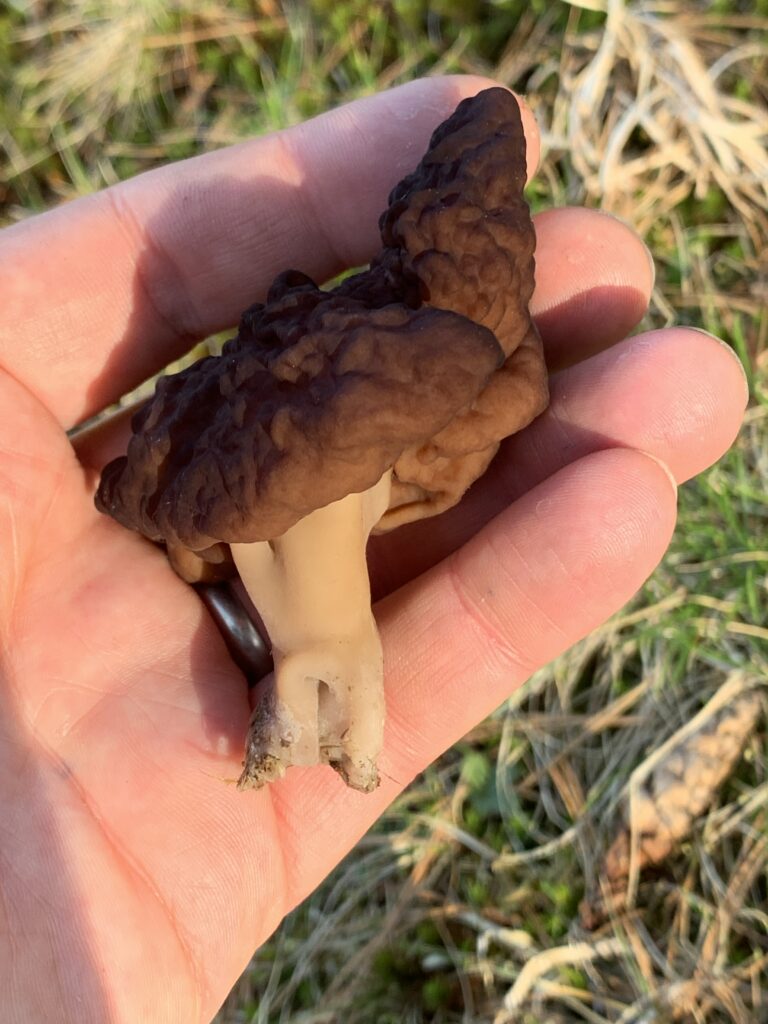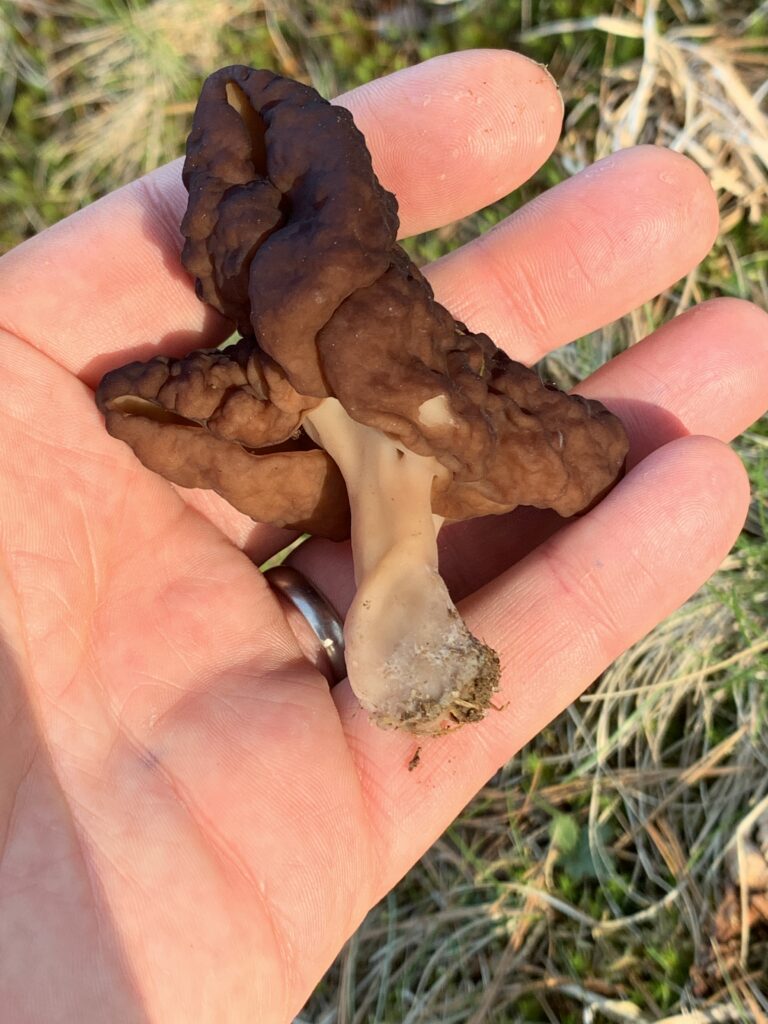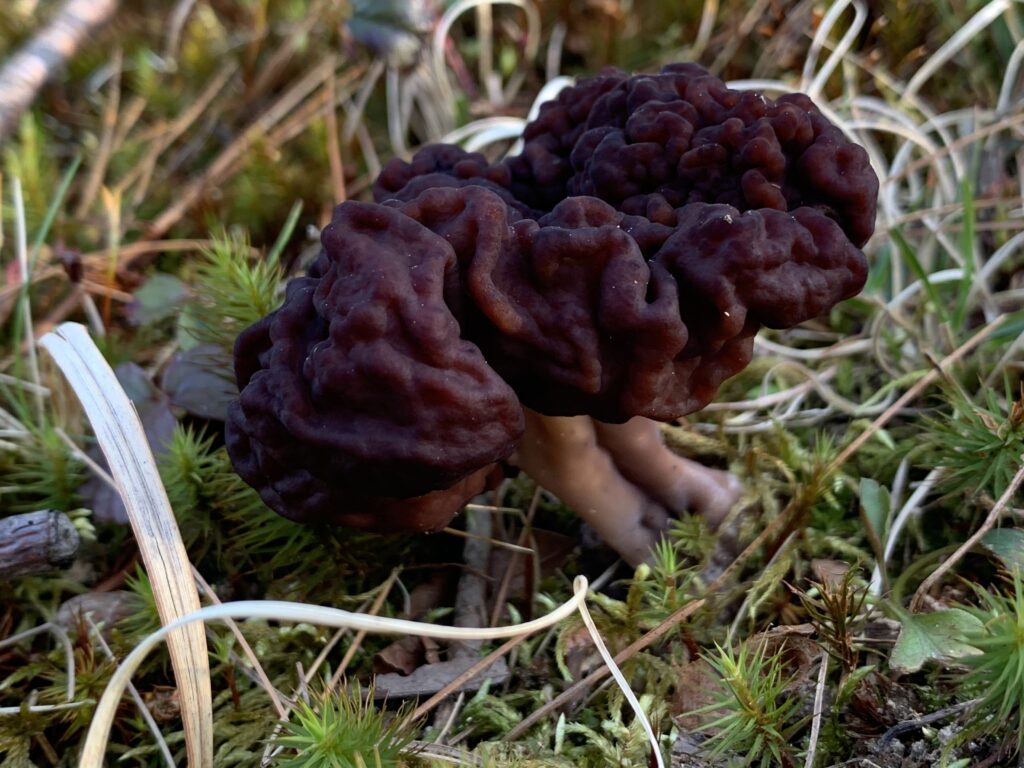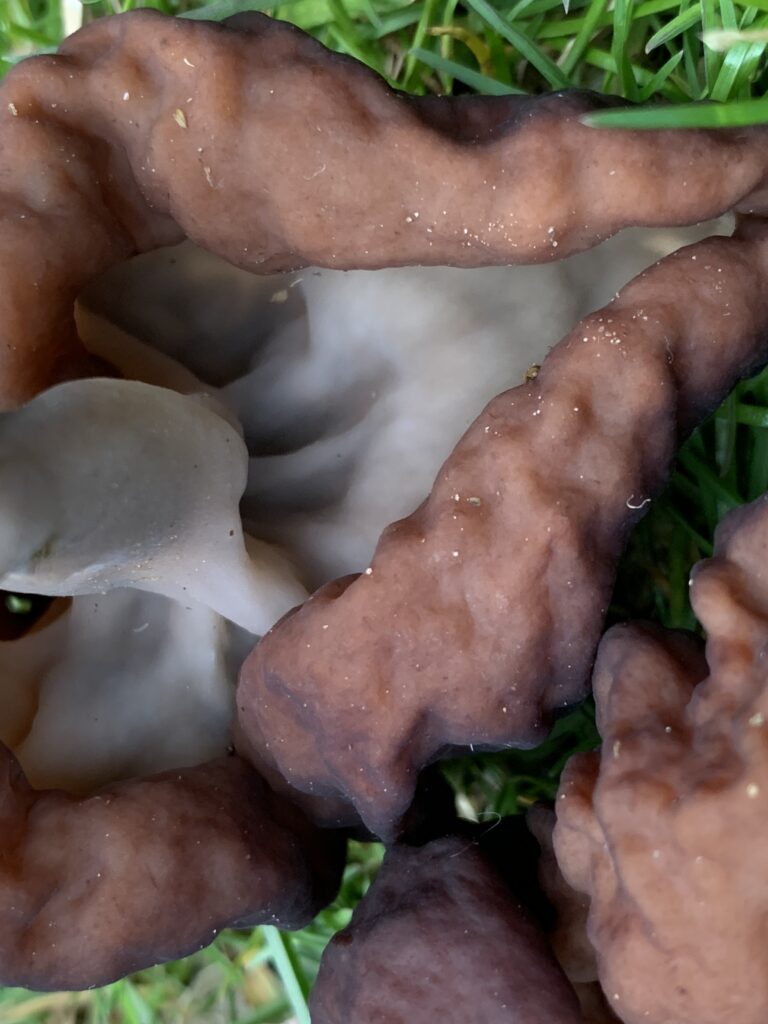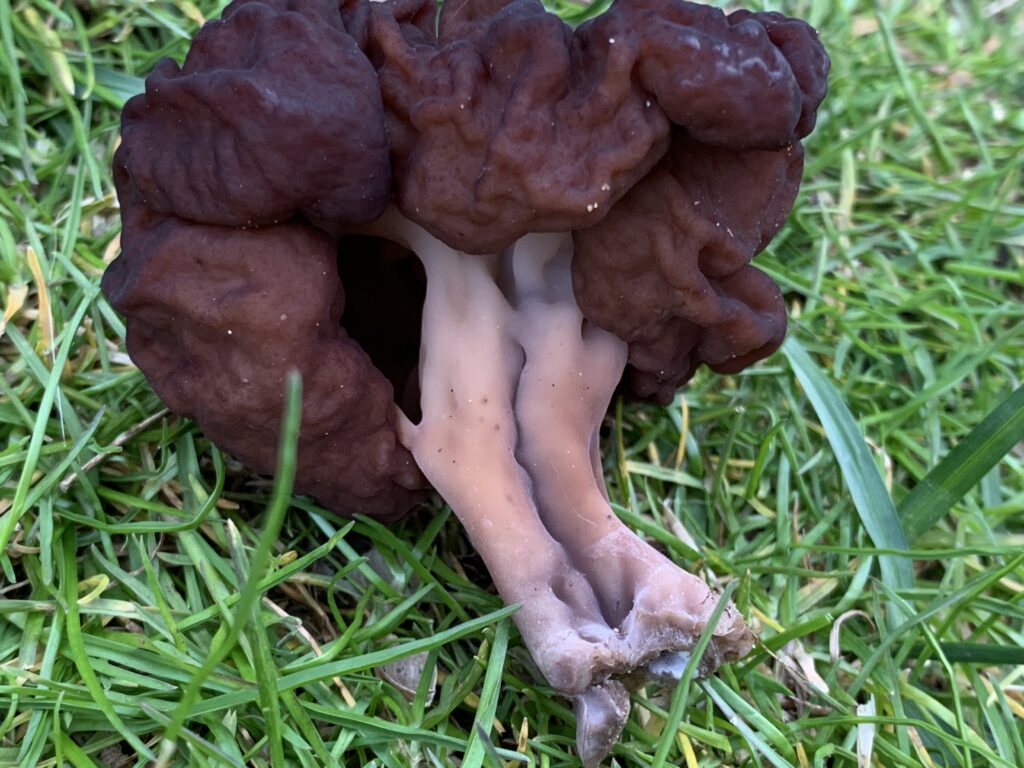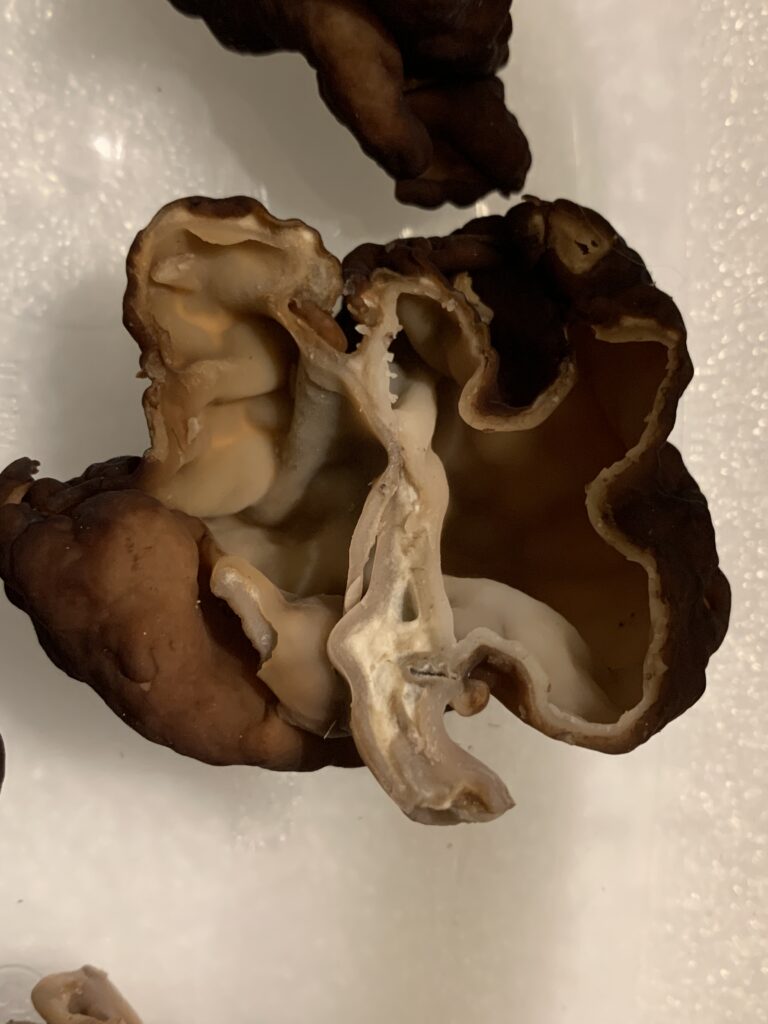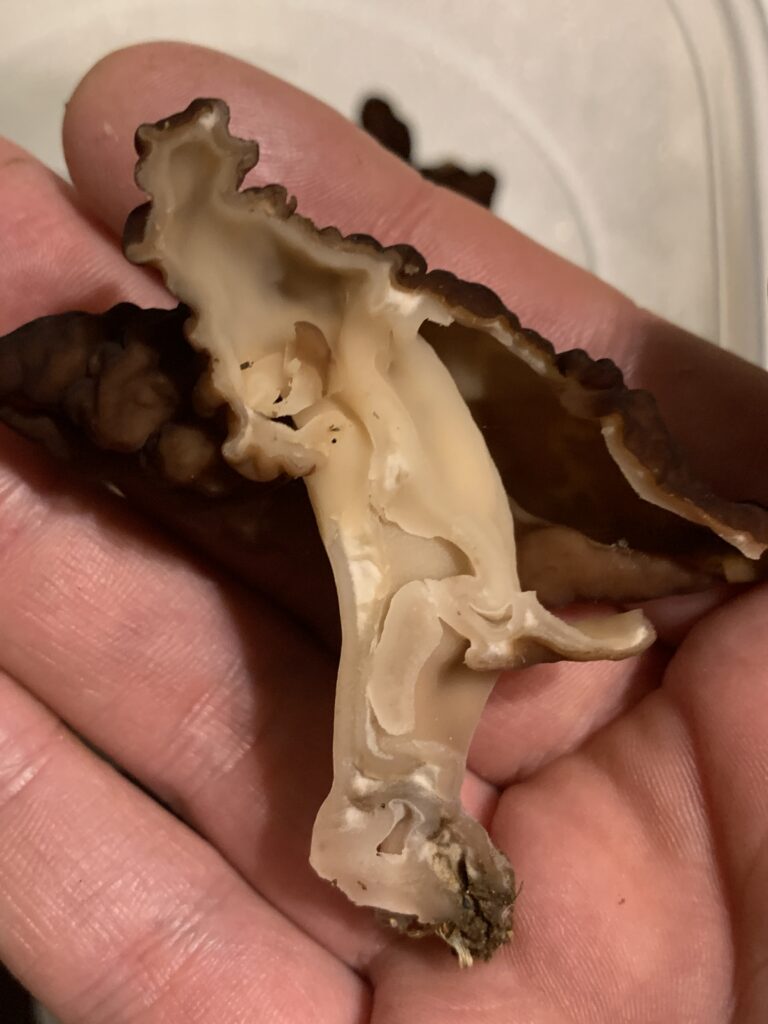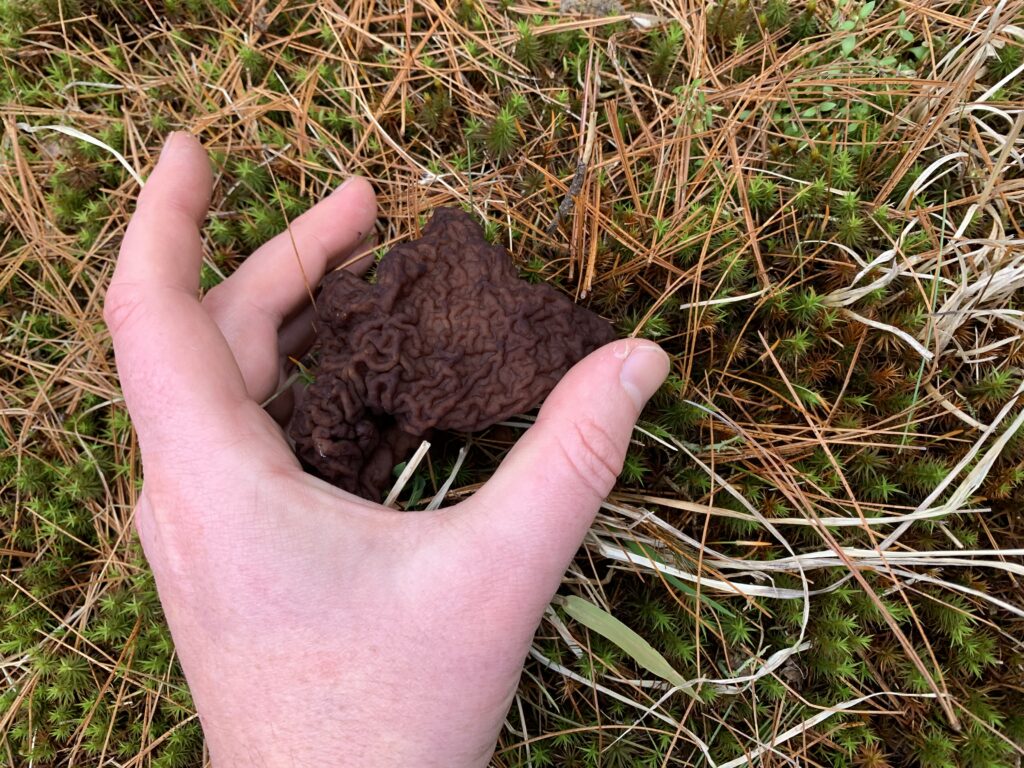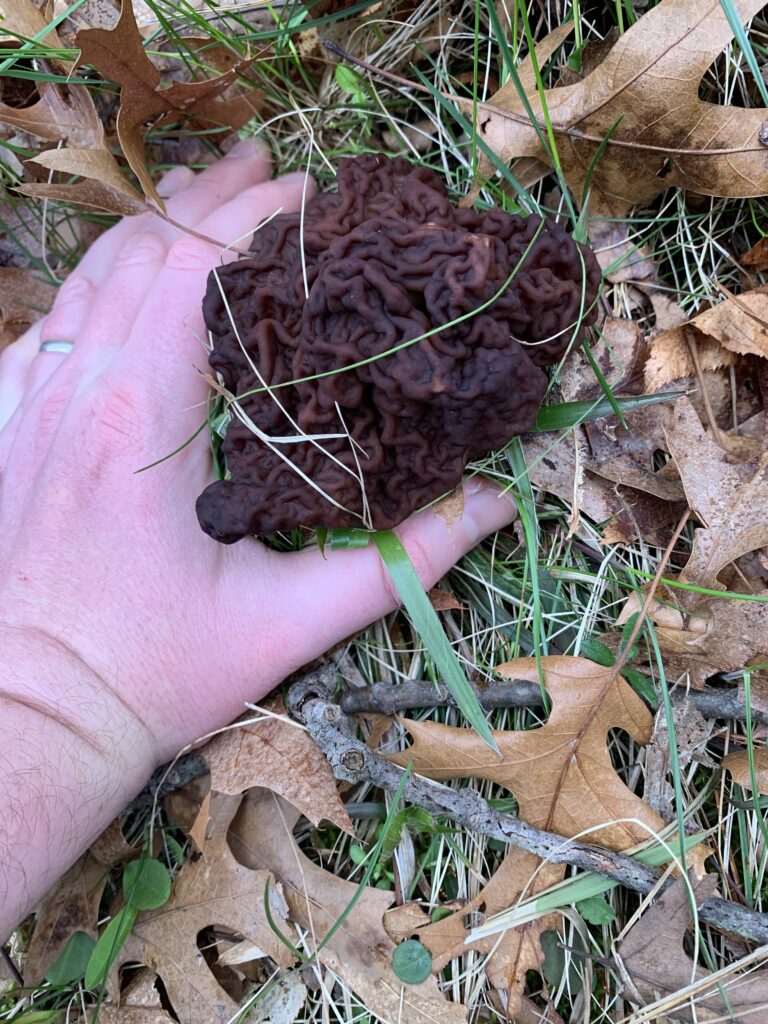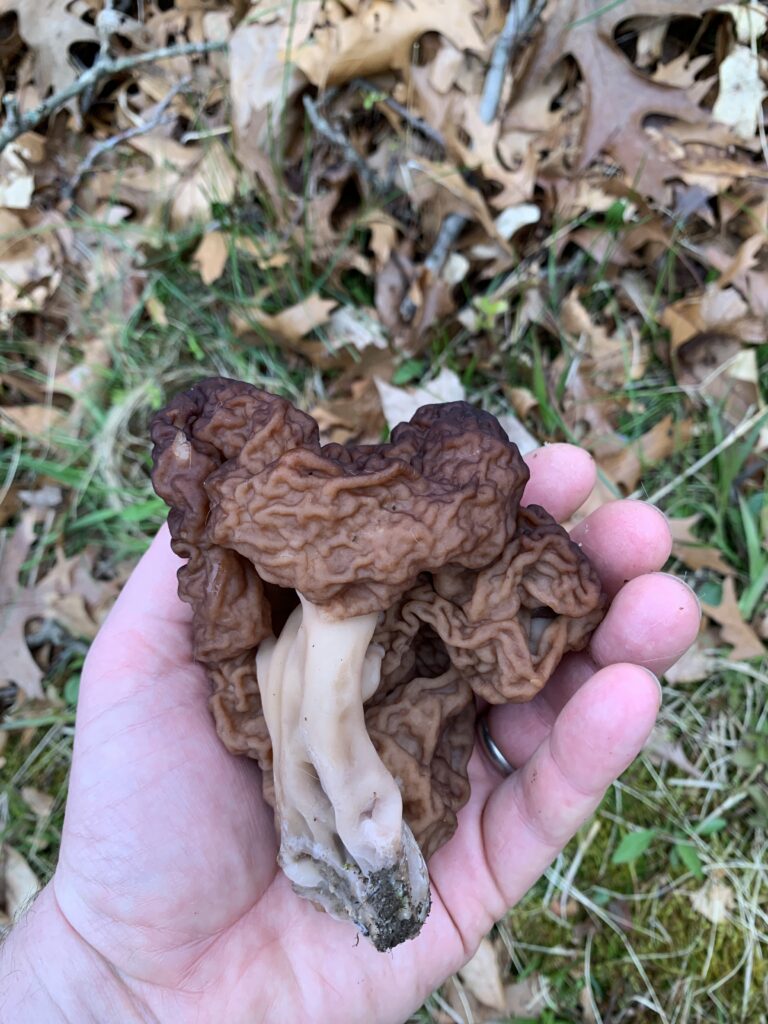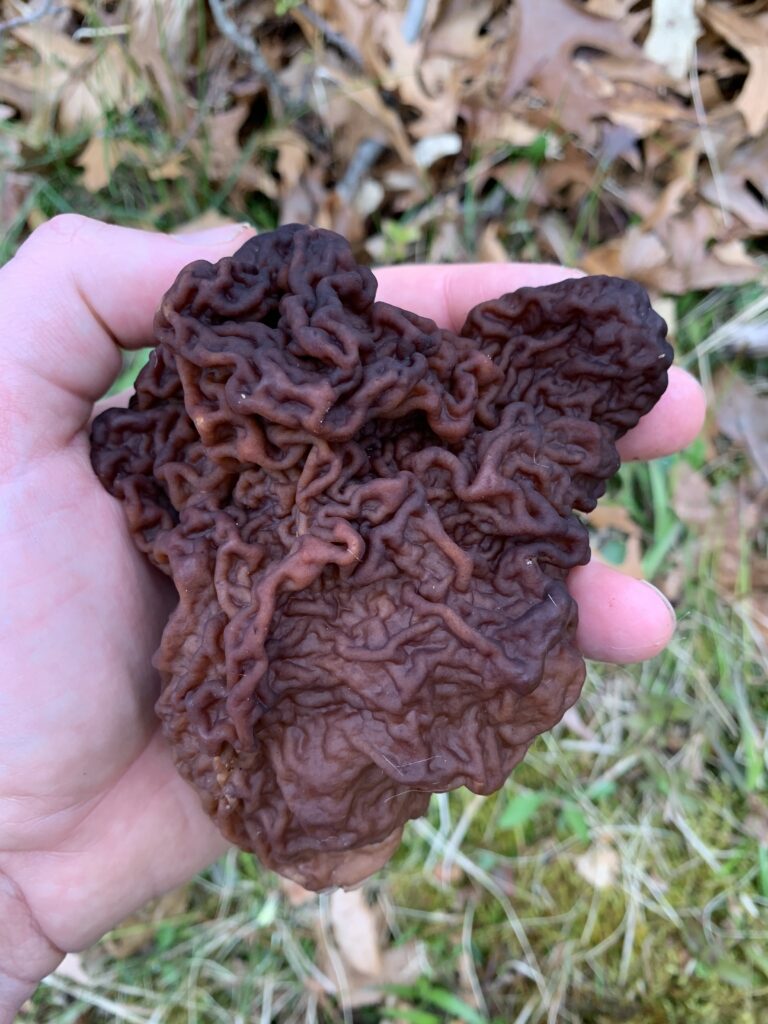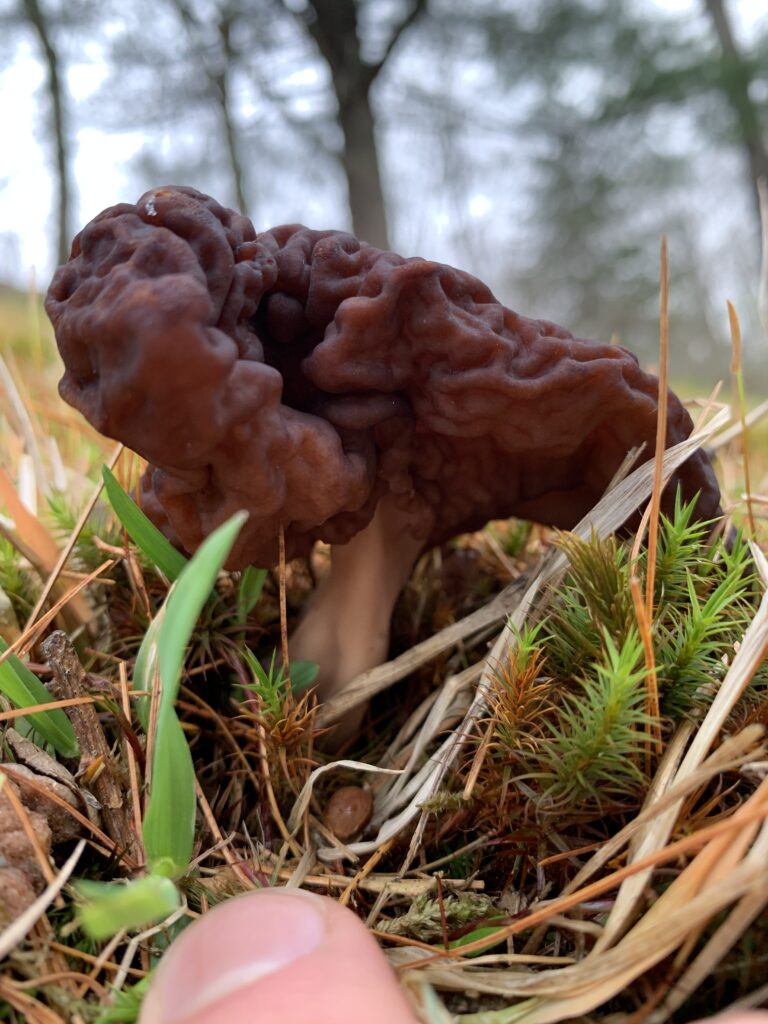
These mushrooms, are relatives of morels. But, fall into the a group of several other Gyromitra, and Verpa that are commonly referred to as “False Morels”. With several species in this group, all of which go by the same common name, there is much confusion about edibility. Verpa, and some Gyromitra are considered edible when cooked. However, Gyromitra esculenta requries special preparation in order to render it safe to eat. They are beautiful mushrooms, and they smell delicious, similar to morels. However, they contain hydrazine, a chemical also found in rocket fuel. It can be deadly or if consumed raw, or if enough of it is inhaled as vapor. People in the netherlands who harvest large amounts of it are advised to drive with their windows open on the way home from foraging! This toxin however, can be boiled out.
You must boil in a well ventilated area (preferably outdoors) due to the toxicity of the vapor itself during cooking. It’s recommended to take 1 part chopped mushroom with 5 parts water, and cook at a full rolling boil for 10 minutes, discarding the water, rinsing, and then repeating the process with fresh water, and boiling again for another 10 minutes. The water must be discarded, and the mushrooms rinsed each time to flush away the toxins.
However, before you throw your G. esculente in the garbage. It’s worth noting that people have eaten these mushrooms for a very long time. They are reportedly quite popular in the netherlands where they grow abundantly. They are even sold at the supermarket (with a warning, and instructions on how to prepare). So, I suspect the above method of preparation to be reliable. But, ultimately you are solely responsible for your own actions, and education. So I urge you to do some research on your own, as safety is always key when dealing with potential toxins.
